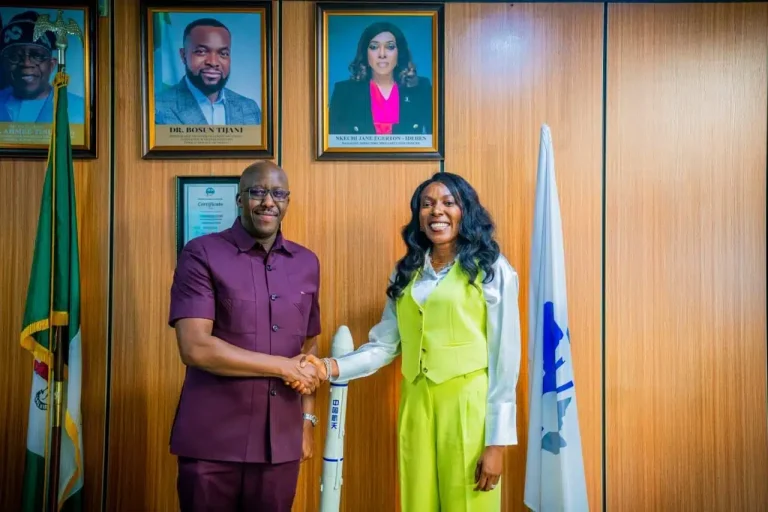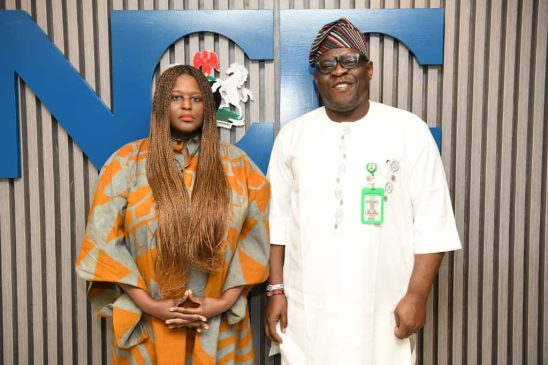With world leaders coming together at COP26 to address the climate crisis, companies seeking to embed sustainability practices are not just doing the right thing for the planet, they’re also following the money. “By 2025, a third of the world’s assets under management globally will be ESG [Environmental Social and Governance] investments,” says Mark Lancelott, sustainability finance expert at PA. “Investors will be looking at how a business is addressing sustainability and climate response – and that will affect access to capital.”
But responding to climate change and embracing impactful sustainability is a shift not all businesses can instantly enact – systemic change must first take place. It requires fresh thinking about five key components of every business’s operations – water, carbon, waste, product, packaging – and following up with action. “The question then becomes how one sees and realises the value in those five things,” says Jonquil Hackenberg, global head of sustainability at PA. “How you derive new business models and financial benefits as much as environmental benefits; how you innovate in that space from a technology as well as from a business model perspective; and how you measure progress.”
It starts with making sustainability central to your purpose as a firm. You’ll need to pick an area that’s core to your business and where you can win and start delivering real impact. For this you will need partners outside your business who can take you further and look for existing and new technology to develop life-changing innovations.
Make sustainability core to your business and value chain
Treating sustainability as an initiative is great, but to make real impact, you’ll need to embed it into your organisation’s core purpose. This ensures all strategies and activities are measured against sustainability goals. This will drive the right actions across the company and wider value chain, helping uncover novel opportunities and deliver greater impact environmentally and to the bottom line.
The consumer goods industry has been one of the most responsive, explains Hackenberg. “It’s starting to tackle this head-on in a very tangible and pragmatic way,” she says. A textbook example is Unilever – where sustainability is core to their strategy. It has committed to achieving net zero emissions from its products up to point of sale by 2039, sourcing 100 per cent of its energy across their operations from renewable sources by 2030 and ensuring that 100 per cent of its plastic packaging is reusable, recyclable or compostable by 2025. Hackenberg says that today, people buy chocolate for its taste, but in five years’ time consumers will be buying “the entire value chain narrative” that comes with it – from solar panels to the orangutans saved by banning unsustainable palm oil.
In our work with the food company, Dole International, we are guided by its approach to make sustainability the heart of their business strategy. Its goals include making healthy nutrition more accessible to all, reducing waste, making sure all fruit is converted for human consumption and adopting sustainable water and land consumption practices. Wil Schoenmakers, global head of consumer, retail and manufacturing at PA, says: “Dole International is working hard to ensure it harvests the fruit at the right time – and all of it, regardless of size and shape – while making sure as much as possible makes it to healthy consumption by people around the world. Its ambition is to transition from an organisation that packs fruit, to one giving access to healthy nutrition for all, while doing this in the most sustainable way possible.”
Don’t try to tackle everything – focus on areas core to your business
Companies should play to their own strengths and focus their sustainability and climate response efforts where they can have the most impact on the environment and create the biggest commercial opportunities. And a good place to start looking are the five areas of water, waste, carbon, products and packaging.
“Rather than trying to be brilliant at all 17 UN Sustainable Development Goals, focus on what matters most to your business” says Hackenberg. “For example, transportation is concentrating on de-carbonisation, the drinks industry should be focusing on water and the packaging industry is pushing re-use and recycle.”
Working with Scottish distiller Dunnet Bay, we helped them move to a closed-loop business model to reduce waste and carbon for their spirits ranges. The company sells its Rock Rose gin in heavy, costly-to-ship but beautiful ceramic bottles which consumers were loath to throw away. Together, we have created Rock Rose recyclable refill pouches. “It allowed Dunnet Bay to reduce waste, material cost and the associated carbon footprint in terms of shipping,” Lancelott says, “while also fundamentally changing the relationship with customers through a subscription-based business model.”
Dunnet Bay – packaging and business model innovation
Building in sustainability gave Dunnet Bay Distillers a whole new revenue stream
Companies’ thinking about waste reduction is shifting, according to Tony Perrotta, sustainability and regenerative economy expert at PA. “It is not only about reducing waste production anymore: it is about either valorising one’s waste (by selling it to someone who has a use for it) or conversely finding value in someone else’s waste,” says Perrotta. For instance, we worked with California-based Treasure8, which developed a novel dehydration technology that preserves food without degrading its nutritional value. By doing so, it reduces food waste and upcycles surplus produce. “They’ve taken a problem that would have resulted in lost revenue, food waste and additional landfill activity – and turned that into a new revenue-generating business model with a value-added product for the end consumer,” adds Perrotta.
Just get started and measure, measure, measure
Many companies spend a lot of time and effort trying to find every answer before getting going – but taking a first step on the path to sustainability and delivering a positive impact is preferable to trying to come up with the perfect plan. “We don’t need more theory. We need action. So, don’t be afraid to experiment. Failure is okay as long as you learn from it,” says Hackenberg. “And most importantly, measure what you are doing continuously so you can see what is working. Don’t just hit and hope.”
Early movers are reaping great rewards. Over the past decade and a half, Ørsted, Denmark’s largest energy producer, turned its business into a champion for sustainability. By investing in the potential of wind and solar early on, the company went from producing less than 20 per cent of its energy from renewable sources in 2006, to getting 86 per cent of its energy from renewables in 2019. “As a result, they have seen massive share price leaps,” says Hackenberg.
But knowing how to start is still challenging for many companies. According to Lancelott, they are prevented from taking action as they struggle with questions such as: “Where do I prioritise my R&D investment? How can I uncover new product, service and business model opportunities? How can I apply lean startup or agile thinking to realise them?” We worked with The UN Global Compact to address this challenge and created an innovation framework for breakthrough impact to help companies take the first steps.
Collaboration is your ticket to drive impact at scale
Climate response and sustainability are systemic problems, the scope and impact of which goes beyond the boundaries of one company or sector. To pursue sustainability successfully, organisations need to understand their full ecosystem and find collaboration partners from within and across industries and throughout the value chain. Fight the urge to go-it-alone – you will go further and faster with others.
Some companies or non-profit organisations – such as the Ellen MacArthur Foundation, with which PA wrote a circular business model guide to help leaders – are catalysts for change, mobilising governments, industries and countries, but collaboration can also start closer to home. “You need to understand the impact of your operations on the entire value chain and bring your suppliers along with you to have an even greater impact around your area of focus,” Hackenberg says. “Build relationships with smaller businesses and startups, as they often set the example of what good could look like.”
Potential partners could come from surprising places. When working with a consumer goods company on valorising their waste, the use of PA’s Dark Matter AI tool revealed potential byproducts and a host of new partners that might otherwise not have been considered. “We found out all the different ways the waste could be broken down using different technologies and then set up an ecosystem of potential partners who might buy those compounds, creating new revenue streams” says Kim McCann, industrials and manufacturing sustainability expert at PA.
In helping Milliken and Co, a US-based chemical additives company, to develop a strategy for more sustainable plastics, PA facilitated conversations right across the value chain: oil companies, brand owners, retailers, policy makers, recyclers and waster disposers. As Lancelott explains: “We helped them answer the question of how to respond to customer sentiment around single-use plastics and become part of the solution, which subsequently led to a new strategic partnership between Milliken and PureCycle Technologies, a recycling company.”
Technology and science innovation will supercharge your efforts
Many of the answers to sustainability and climate response will lie in technology innovation. So, when it comes to supercharging sustainability efforts, companies need to get their technology “landscaping” right. This means understanding what is out there and tapping into startups, researchers and cutting-edge technology, and then bringing them together to develop the right innovation strategy and portfolio for greater impact.
“Modelling tools such as Digital Twins, for example, can help to de-risk decisions on which technologies to adopt,” explains McCann. “We are seeing increasing due diligence activity for investments in startups in the green technology space. Our techno-economic models help those companies to get the marriage of technology and business modelling right to capture that investment”.
Thanks to cutting-edge sensors, it is now possible to monitor sustainability impact at a granular level and in real time. “In agriculture, you can assess the carbon footprint of particular crops, and this information can be used to develop education programmes to address inequality in emerging countries,” Lancelott explains, “while blockchain can help create the transparency needed for your supply chain.”
In the area of packaging innovation, PA is working with PulPac, a Swedish R&D firm that is developing novel pulp moulding technology to create sustainable packaging, connecting it with brands that need to phase out single-use plastic packaging. Also in the world of plastics replacements there is a massive interest in the use of alginates – with Notpla’s waste free alternative to plastic bottles, and Loliware’s plastic-free drinking straws being great examples.
British soft drink company Britvic acquired Aqua Libra Co – a startup whose device creates boiling, chilled, sparkling and flavoured water at the point of consumption, reducing water usage. “Britvic has been able to use technology innovation and go to market in a completely different way,” says Hackenberg. “In a similar way, large corporates like Pepsi are talking about adding flavour at the point of dispense rather than production.”
One of the main technology advances likely to hit the automotive industry is the rise in developments around solid-state battery chemistry. “Innovation, however, comes in all forms”, explains Aris Karcanias, PA’s global head of energy. “This includes having the ingenuity to combine such new technology with a deep understanding of human behaviour and totally rethink the use of the car. We are currently applying such human-centric design thinking to develop a new EV charger solution that could standardise the uptake of charging solutions to enable increased technology adoption.”
Technology alone, however, is not enough. It has to be built into the overall customer experience and influence behaviours if you want people to adopt it and make a difference. By making sustainability core to your purpose, playing to your strengths, getting started, and working with partners, alongside technology – you can win at sustainability innovation.
Technology has the potential to answer many of the world’s toughest challenges, but it requires human ingenuity to unleash it. PA Consulting, in partnership with WIRED, shares insights on what it takes to develop and deliver life-changing technology.












+ There are no comments
Add yours